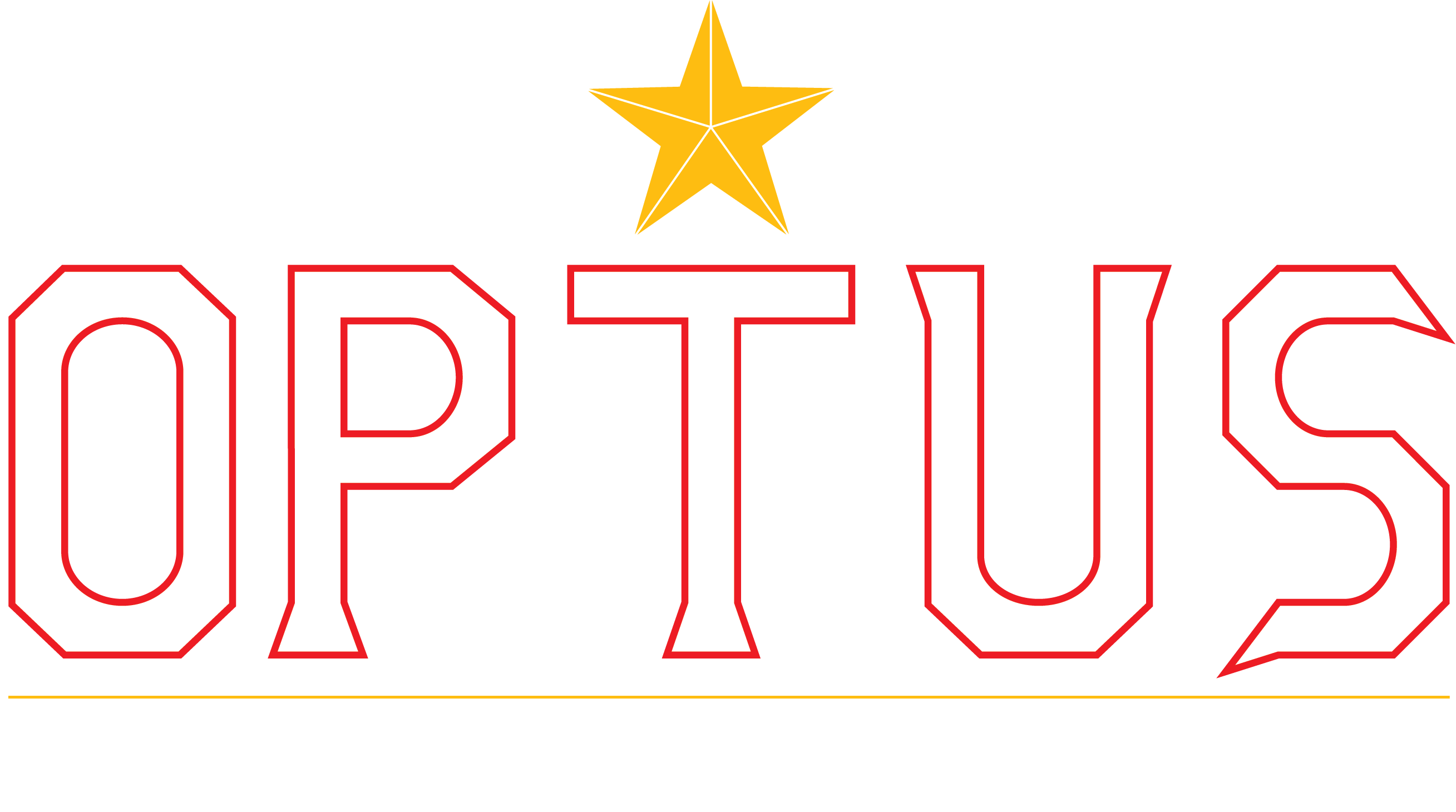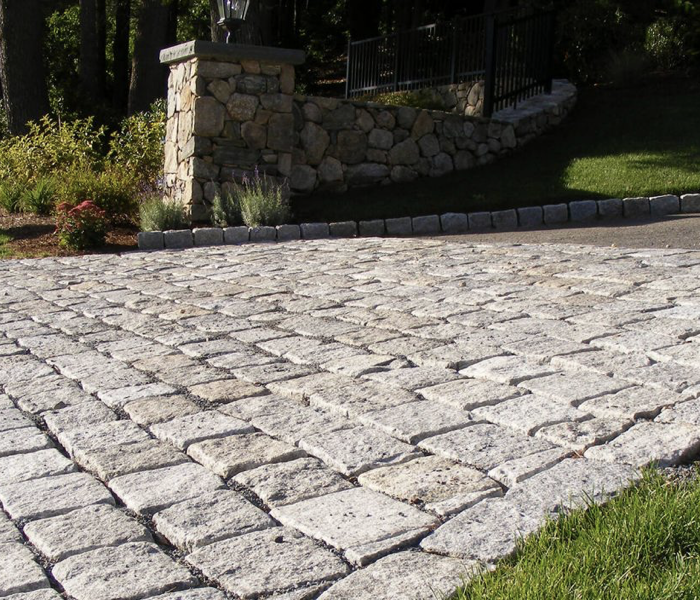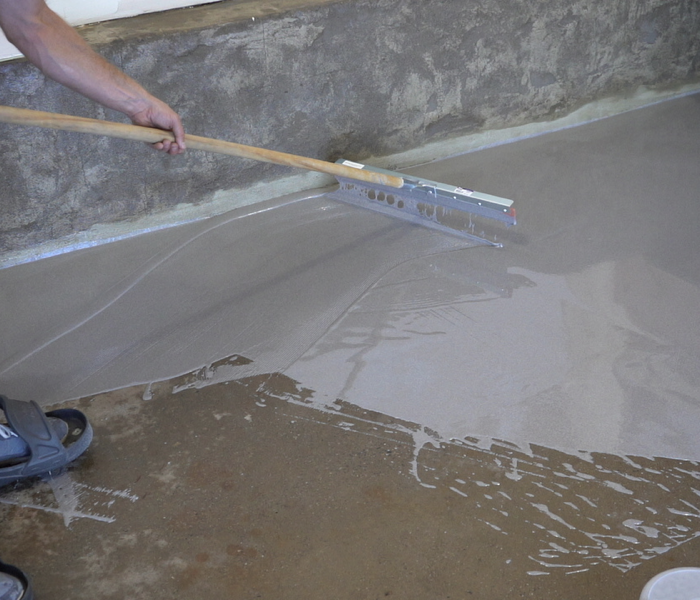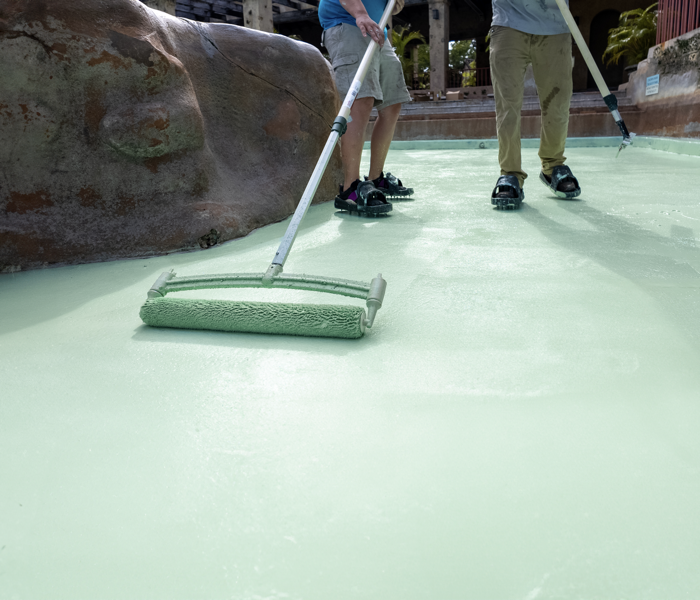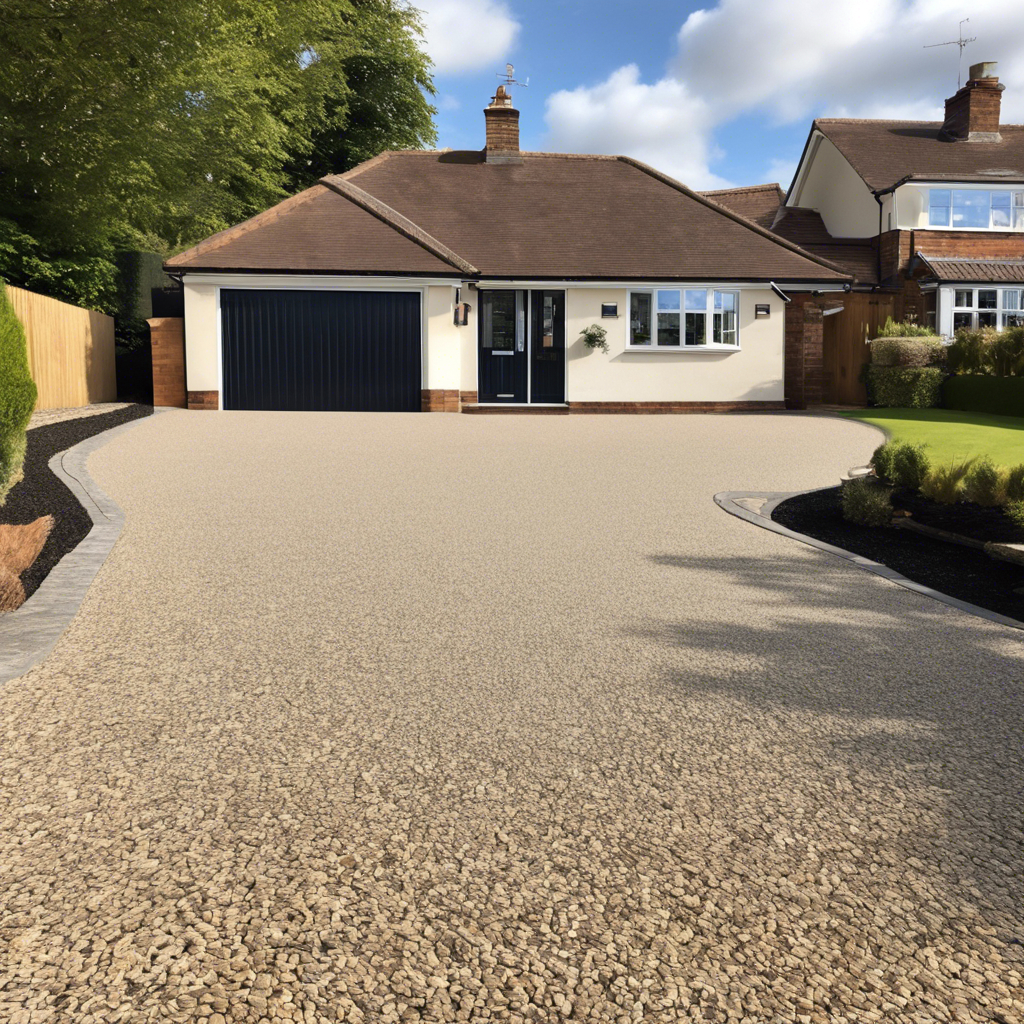
Choosing the right material for your driveway can be a challenge. One popular option is resin driveways, which come in two main types. This article will explore the differences between resin bound and resin bonded driveways, helping you make an informed decision.
Resin Bound Driveways
Resin bound driveways offer a smooth, seamless surface with excellent permeability.
Description and Characteristics
Resin bound driveways combine aggregate stones with a clear resin to create a permeable paving solution. This mixture is then spread over the driveway surface, creating a smooth finish that is strong enough to withstand regular use but also flexible, reducing the risk of cracks.
These driveways not only offer practical advantages like reducing flood risks but also enhance the curb appeal of any property. With their high grip feature, they provide safer walkways compared to loose gravel options.

Permeability and Usage
Resin bound driveways are famous for their ability to let water pass through, making them an excellent choice for managing surface water.
The porous paving allows rainwater to drain away quickly, reducing puddles and avoiding issues that come with standing water. This feature is particularly valuable in areas prone to heavy rainfall or where efficient drainage systems are necessary.
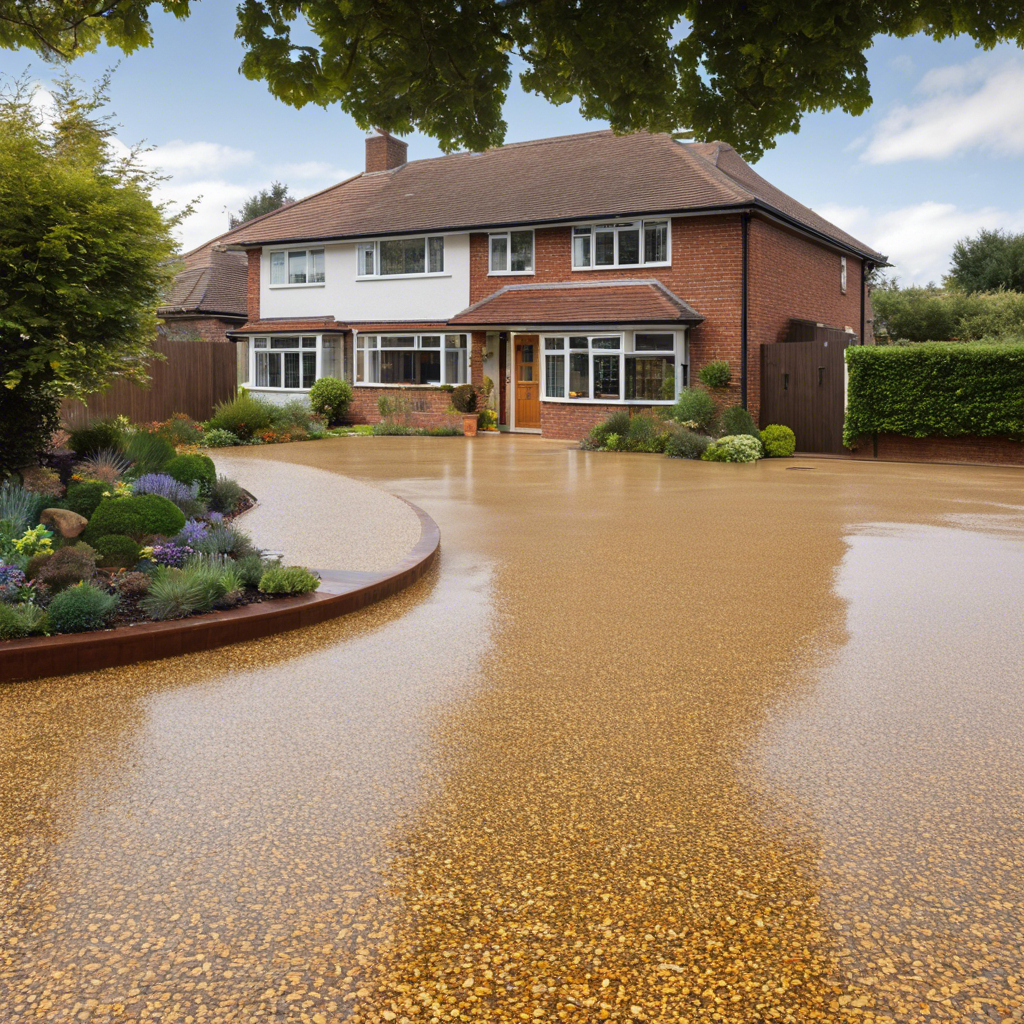
The use of a proper porous base underneath these driveways ensures effective water drainage, minimizing the risk of flooding and maintaining the pavement’s integrity over time. Due to their permeable nature, resin bound surfaces are ideal for various applications beyond just driveways; they’re also suitable for footpaths and public spaces needing sustainable surface water management solutions.
Resin Bonded Driveways
Resin bonded driveways provide a textured, non-slip surface, creating an ideal solution for outdoor areas. The application process involves scattering loose stone onto the resin layer to create a decorative finish.
Surface Texture and Application
Resin bonded driveways offer a textured finish and the appearance of loose gravel. The application involves spreading the resin over the existing surface, then broadcasting loose aggregate onto it before curing.
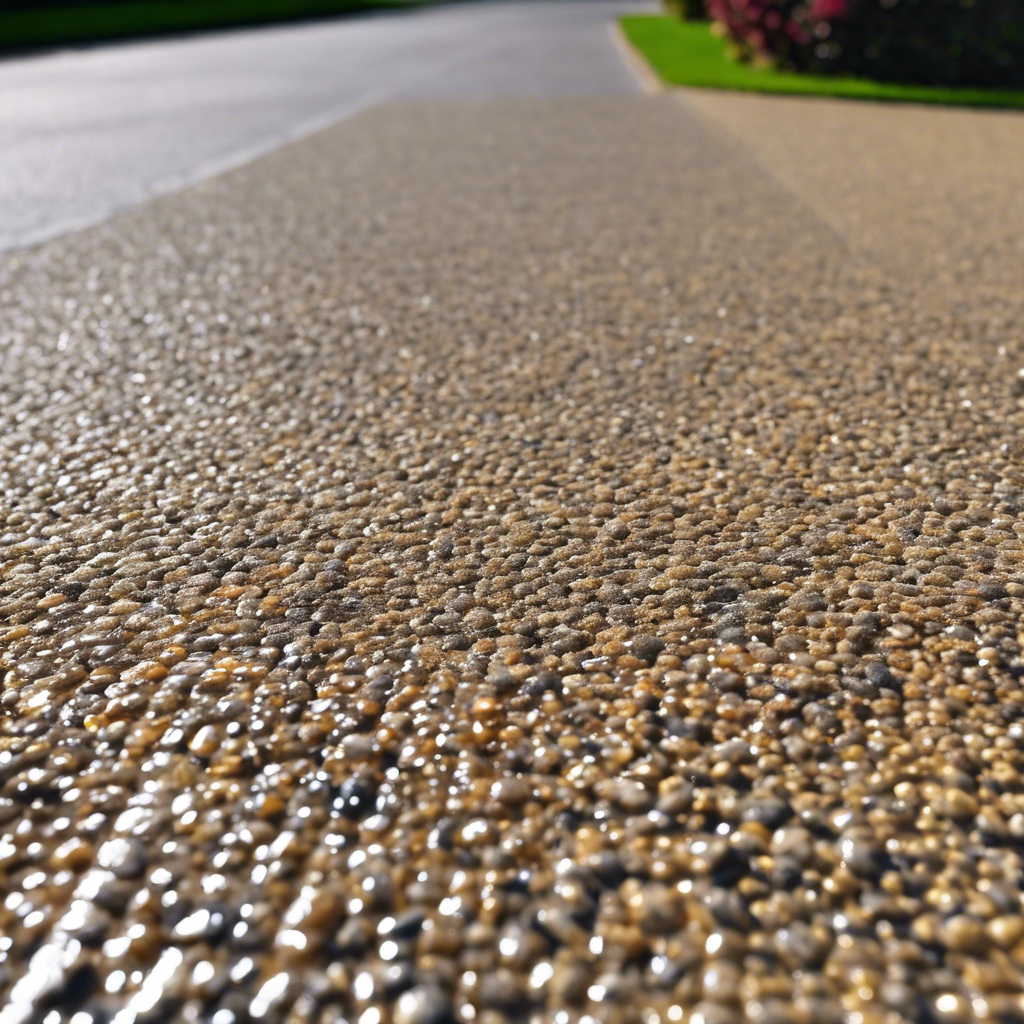
This method creates a durable, permeable surface with an attractive texture that is ideal for enhancing outdoor spaces.
When selecting between resin bound and resin bonded driveways, it’s essential to consider how each surface texture and application suits your specific needs and preferences.
Conclusion
Resin bound driveways involve mixing the aggregate with resin, creating a smooth and porous finish. The installation process requires careful mixing and laying for a visually appealing result.
On the other hand, resin bonded driveways include applying resin to the surface and scattering loose stone on top, resulting in a textured finish. Loose stones may require more regular maintenance to prevent them from becoming dislodged over time.
FAQs
Resin driveways come in two types: bound and bonded.
In a bound resin driveway, the stone and resin are mixed together before being laid, while in a bonded driveway, the stones are scattered onto a pre-applied layer of resin.
A bound resin driveway provides better water permeability due to its porous nature compared to a bonded driveway.
It’s recommended to hire professionals for both types of installations as they require specific skills and knowledge for proper execution.
Yes, there can be differences in appearance as each type offers unique textures and finishes based on their installation method.
